Heavy Duty Polyurethane Wheels
Anti Static Semiconductor PU Tire
In the semiconductor manufacturing sector, maintaining a controlled and clean environment is paramount to ensure the integrity and functionality of electronic components. One aspect of this control involves managing electrostatic discharge (ESD), which can lead to damage of sensitive semiconductor devices. Anti-static polyurethane (PU) tires play a critical role in mitigating ESD risks within cleanroom environments. This guide will delve into the importance of anti-static tires, their properties, and how they are specifically tailored for use in the semiconductor industry.
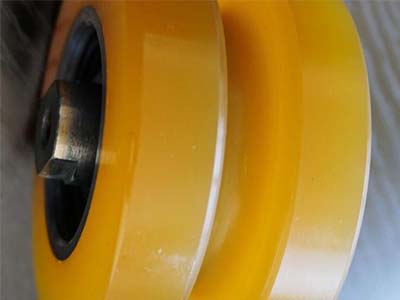
Importance of Anti-Static Tires in Semiconductor Manufacturing Electrostatic discharge can occur when charged objects come into contact or release their charge suddenly, which can cause damage to microelectronic devices. In a semiconductor manufacturing facility, ESD can lead to:
Device Malfunction: Subtle changes in circuitry due to ESD can result in faulty or unreliable devices.
Increased Defect Rates: ESD can cause latent defects that may not be immediately apparent, leading to higher defect rates during testing or in the field.
Production Downtime: Managing ESD-related issues can lead to production delays and increased maintenance costs.
Anti-static tires are engineered to minimize static electricity buildup, thus reducing the risk of ESD events. They are essential for equipment and material handling systems used in semiconductor cleanrooms.
Properties of Anti-Static Polyurethane Tires
Polyurethane tires designed for anti-static purposes incorporate conductive materials that dissipate static charges. Key properties include:
Conductive Additives: These additives are mixed into the PU compound to create a conductive path that allows static charges to be safely dissipated to ground.
Surface Resistivity: The surface resistivity of anti-static tires is carefully controlled to fall within a specific range that ensures effective grounding without causing electrical short circuits.
Durability: Polyurethane is chosen for its durability and resistance to wear, ensuring that the tires maintain their anti-static properties over time.
Cleanliness: PU tires generate minimal particulate emissions, making them suitable for cleanroom environments where contamination control is critical.
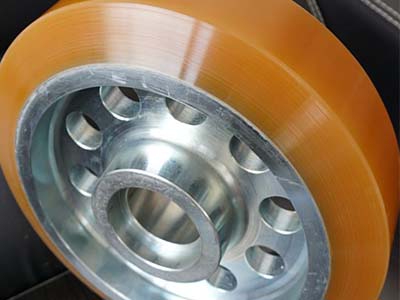
Applications in Semiconductor Manufacturing
Anti-static PU tires find applications in various equipment and systems within semiconductor manufacturing facilities:
Material Handling Carts and Trolleys Wheels: Used for transporting raw materials, wafers, and finished products, ensuring that static charges do not accumulate during movement.
Automated Guided Vehicles (AGVs) Wheels: AGVs equipped with anti-static tires move materials and components around the factory floor, maintaining ESD control.
Wafer Handling Robots Wheels: Robots used for picking, placing, and aligning wafers often require tires with anti-static properties to prevent ESD damage during handling.
Cleanroom Furniture Wheels: Chairs, tables, and other fixtures in cleanroom environments often use anti-static tires to minimize static charge buildup.
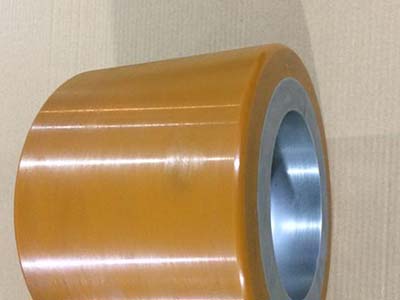
Testing and Certification
Anti-static tires undergo rigorous testing to ensure they meet the necessary standards for use in semiconductor manufacturing. Tests include measuring surface resistivity and verifying that the tires can effectively dissipate static charges. Certifications from recognized bodies, such as the Semiconductor Equipment and Materials International (SEMI), can validate the tires' suitability for use in sensitive semiconductor environments.
Anti-static polyurethane tires are indispensable in the semiconductor industry for maintaining the integrity of sensitive devices by controlling electrostatic discharge. By incorporating conductive additives and controlling surface resistivity, these tires provide a safe and reliable solution for material handling within cleanroom environments. Regular inspection and maintenance of anti-static tires are crucial to ensure ongoing effectiveness and adherence to strict industry standards.
If you would like to know more about the semiconductor polyurethane wheels, please contact us for relevant materials.
Latest News & Blog
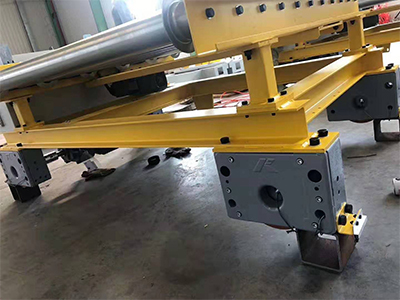
Robust Guide Wheels for Stacker Cranes: 40T Capacity
11 May, 2023High-capacity stacker crane guide wheels (up to 40T) with 6 sizes, reliable, low-maintenance for AS/RS, ports & heavy logistics.
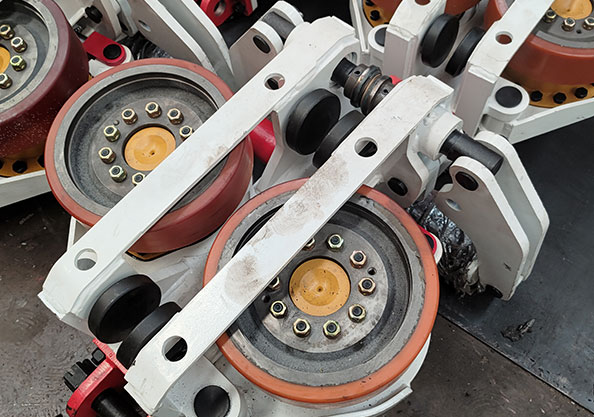
Vulkollan® Drive Wheels Powering Monorail Evolution
11 May, 2023Vulkollan® drive wheels enhance monorail performance with superior durability, load capacity, and reliability for industrial applications.
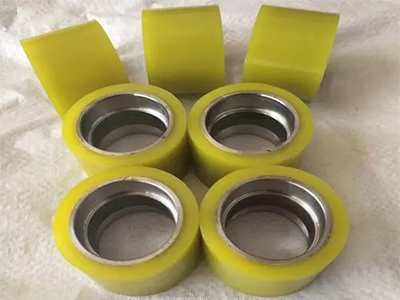
Application of Poly Press-on Cast Wheels
11 May, 2023Poly press-on wheels with cast iron centers stand out as a beacon of reliability and efficiency. These tyres, meticulously crafted to blend the unyielding strength of cast iron with the resilient properties of polyurethane, offer a solution that transcends the conventional.

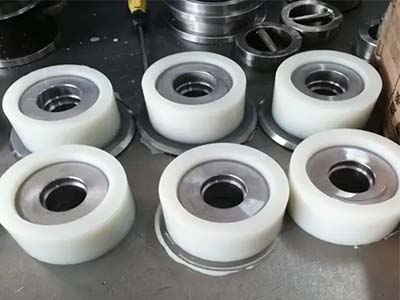
Applications of Polyurethane Wheels in OHT System
11 May, 2023The integration of Polyurethane (PU) wheels into the Overhead Hoist Transport (OHT) system has revolutionized the material handling industry, offering a range of applications that enhance both the efficiency and versatility of these systems. making them suitable for a variety of OHT system applications across different sectors.